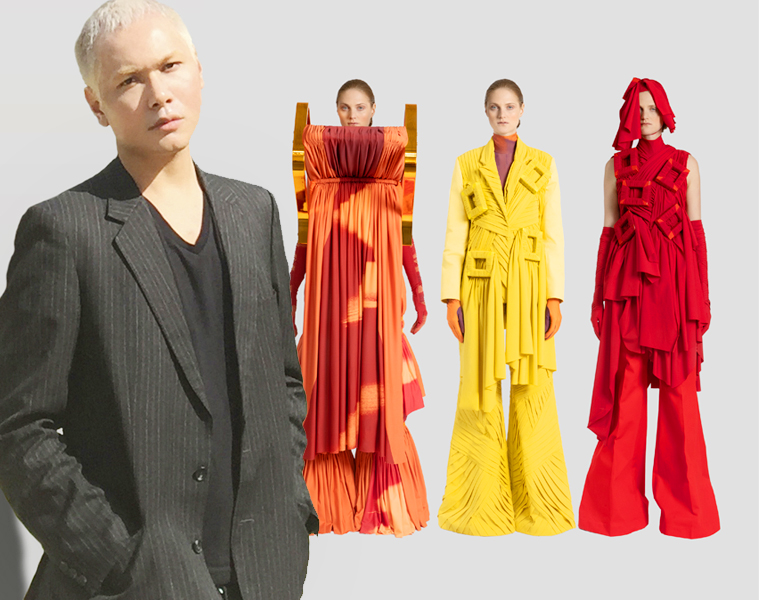Does young Filipino designer Jessan Macatangay have a seat at the future of fashion?

Writing about Filipino designer Jessan Macatangay, Natasha Hitti, a reporter for architecture and design magazine Dezeen, was about to elicit from him a comment about chairs. This is important, as chairs literally make up the frame and details, in differing ways and amounts, of his graduation fashion collection presented at Central Saint Martins, the school from which Stella McCartney, John Galliano, and the late Alexander McQueen come from.
For Macatangay, a chair can easily be inverted. When done, the furniture that provides comfort becomes a burden for the bearer. This kind of thinking may be seen as a deconstructive gesture, a philosophical method of looking enabled by taking away certain assumptions that are usually unexamined.
https://www.instagram.com/p/CBipOKdjmLd/
He goes beyond the philosophical perspective in our interview, however, focusing on physical disassembly. “A chair represents struggle in my work,” Macatangay says. “Deconstructing the furniture thus is literally and symbolically representing attacking a challenge by taking it one piece at a time. As the challenge is progressively overcome, the struggle becomes part of the body, reflecting power and beauty.”
One might say that the young designer had aimed very high at the start. “For the first three years of doing projects in the university, I always created looks and tackled projects that are very aesthetically pleasing to me,” he says. “For my final collection, I wanted it to have a personal meaning. I wanted this project to be very personal, so I started exploring my personal struggle – mostly about mental health, depression, and anxiety.”
How his vision would come to be was a curveball. Although the concept for his collection comes from the second year of his studies at Central, much was taken from him by the global pandemic that we are all going through. Aside from the anxiety he was already facing, Macatangay had to face an online presentation of his collection and find materials that were readily available and which he could use. He says, rather stoically, “Some struggles are not within our control. Being resilient and persevering, even when it seems the odds are against you, are probably the strongest personal values I upheld.”
https://www.instagram.com/p/CB0pgrgDs3W/
Finding himself faced with living out the concept he had chosen for himself, finding beauty and power in the midst of struggle, he created five pieces that did not only address his aesthetic concerns, but also the need to find a way that he could express his agency. The chair, which is almost completely present in some of the dresses in his collection, is conceptually broken down into smaller pieces, which are integrated with the other dresses. What is both a source of comfort and burden is managed by the designer and put in their proper places. What overwhelms is diminished.
This diminishment of the challenge seems to be transformative for Macatangay, who said that “when you face struggle, it becomes smaller and becomes part of your body, making you a better person.” However, is there another side to this transformation? Can one think that being human is at risk because part after part will always be added in the process of surviving struggle after struggle?
Whatever the answer might be, the vision and creation of fashion is changing due to the sudden and intense movement of the novel coronavirus through the world. Like his school’s well-known alumni, Macatangay blazes a trail and, in the clearing, gives us a seat at the forefront of how clothes might be as people interact with each other from home via online means.

The designs, which go beyond the maximal, utilize what might be distortions for others in order to create an aesthetically satisfying presence. Macatangay, as a newly minted graduate, will continue to negotiate with the tastes of consumers, the workings of the fashion market, and the perceptions of what it is to be human.
For younger and upcoming designers, he believes that there will be a “very clear place for young designers, creating bespoke products, and a shift away from fast fashion thatʻs too soon discarded.” One can be assured that Macatangay is a tasteful artist with a keen mind and a very human response to the ravages of a virus that we are continuing, small by small, to discover.
Text by: Niccolo Rocamora Vitug










